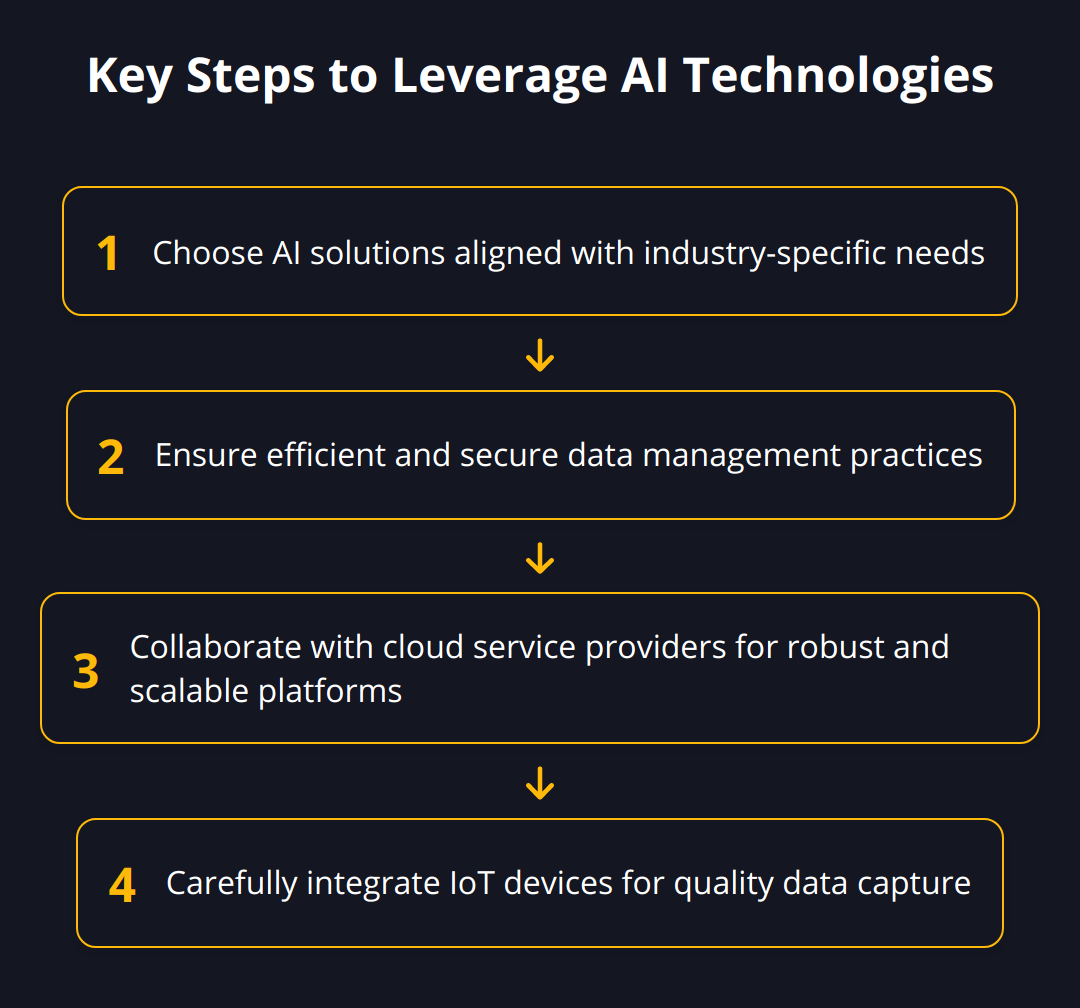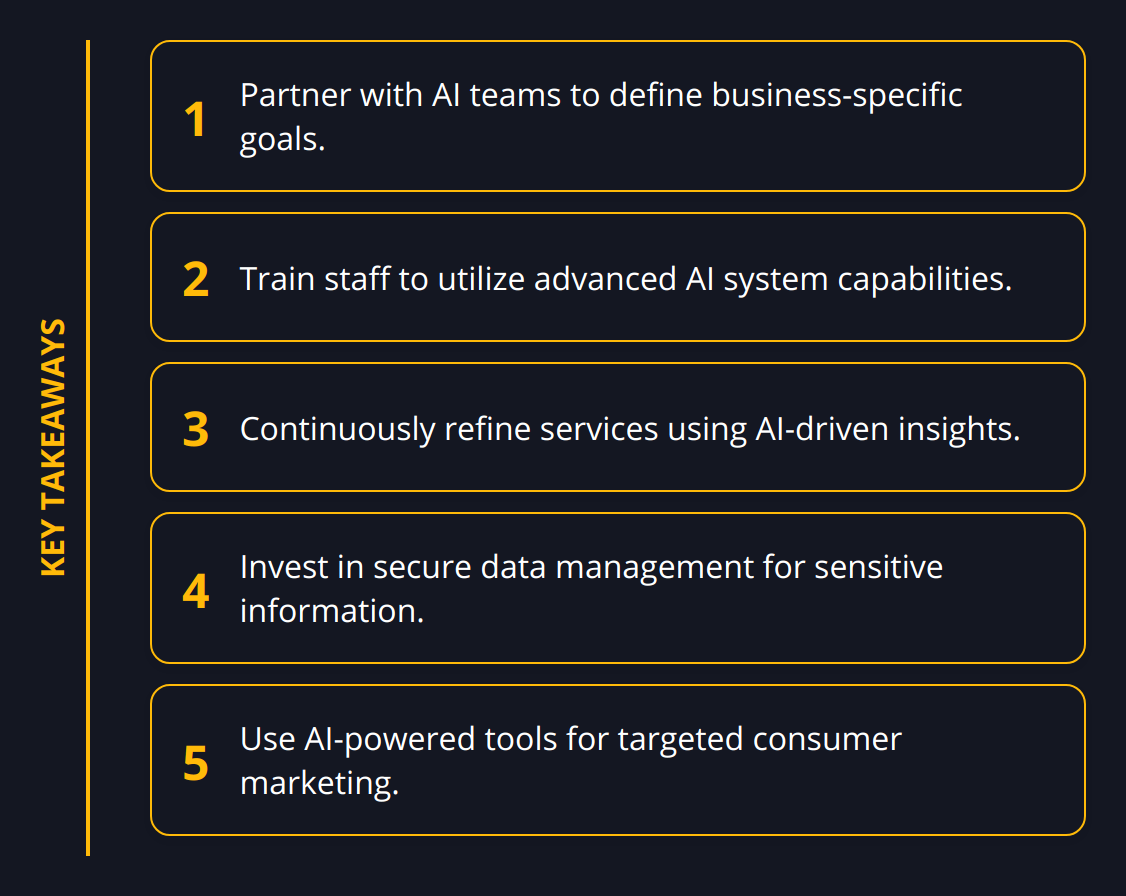We at Newroom Connect are witnessing a paradigm shift as AI-driven virtual models become integral to industry innovation. These models are streamlining production, refining predictive analytics, and tailoring customer experiences like never before. Across key sectors such as healthcare, automotive, and retail, the change is palpable, leading to smarter, more efficient operations. Underpinning these advances are cutting-edge technologies that are setting the stage for an era where adaptability and growth go hand in hand.
Harnessing AI for Dynamic Industry Innovation
The influence of AI-driven virtual models is rapidly transforming how industries operate, bringing a level of precision and efficiency that was once unattainable. Enhanced speed in product development, insightful analytics for strategic decision-making, and heightened service customization are just the beginning of this transformation.
In the realm of product development, AI-driven virtual models expedite the process significantly. These intelligent systems generate prototypes quickly, allowing for rapid iteration and testing. Take for instance the advent of digital twins in manufacturing. Real-world processes and products are mirrored in a virtual space, allowing engineers to analyze and optimize systems without physical prototypes. As reported by Gartner, by 2022, 85% of all IoHT deployments will include at least one digital twin.

Predictive analytics benefit tremendously from AI integration, moving industries beyond mere guesses into the realm of accurate foresight. AI algorithms crunch colossal datasets to predict market trends, equipment malfunctions, and even consumer behavior with remarkable accuracy. With such granular insight, leaders can make more informed decisions. For example, AI in the energy sector can forecast demand with precision, leading to better grid management and resource allocation.
Personalization is another frontier where AI-driven models are making their mark. Retailers are no longer just selling products; they are shaping experiences. Online fashion retailers, for instance, leverage AI to recommend outfits based on customers’ previous shopping behavior and current trends, as seen with services like VModel. From personalized shopping assistants to tailor-made financial advice in the banking sector, AI is enabling services to be curated to the individual, leading to higher satisfaction and loyalty.

In conclusion, the leap in industry performance and customer satisfaction with the introduction of AI-driven models is not just evident—it’s numerically substantiated with heightened productivity rates and increased consumer engagement metrics. Like a well-oiled machine, these intelligent systems are equipping businesses to navigate the future of commerce and technology with confidence.
Implement these action points for a successful integration of AI-driven virtual models:
-
Partner with AI development teams to map out specific goals tailored to your business needs.
-
Invest in training for your staff to fully harness the capabilities of these advanced systems.
-
Use AI-driven insights to fine-tune your customer service and product offerings constantly.
Remember, the integration of AI is not just about harnessing technology; it’s about reinventing your industry’s potential.
Transforming Key Industries with AI
The emergence of AI-driven virtual models is not only a technological leap but also a pivotal moment for key industries. The practical applications of AI are reshaping the landscape of healthcare, automotive, and retail, providing an unprecedented blend of efficiency, personalization, and innovation.
In healthcare, precision medicine is on the rise. It is a game-changer, offering personalized treatment plans based on an individual’s genetic profile, lifestyle, and environmental factors. Integrating AI allows for the analysis of vast datasets, from electronic health records to genomic data, to identify the most effective treatment pathways. AI is leading to better patient outcomes and is considered one of the most transformative forces in healthcare today. For instance, AI models can now predict the likelihood of diseases like diabetes or heart conditions, enabling preventive care measures tailored to individual risk profiles.

The automotive industry is witnessing a significant transformation with the development of autonomous vehicles. AI is the driving force behind self-driving cars, relying on sophisticated algorithms to interpret sensor data and make split-second driving decisions. Moreover, smart manufacturing, powered by AI, streamlines production lines and reduces waste, improving not only cost-efficiency but also environmental sustainability. A connected factory floor, where machines communicate with each other and with human operators, leads to a significant upsurge in productivity. AI-driven systems in the automotive sector are rapidly evolving from luxuries to necessities.

Retail is experiencing a personalization revolution thanks to AI. Tailored shopping experiences have become a staple demand among consumers. AI-driven models analyze shopping patterns and personalize recommendations and marketing messages to fit individual preferences, increasing consumer engagement and sales. Inventory management in retail is also benefiting greatly from AI by optimizing stock levels and reducing over-ordering, which can be a resource-intensive mistake. With the advent of tools like digital twins, retailers can now simulate store layouts and customer flow to better plan their physical spaces.
Here are some actionable tips for businesses looking to leverage AI in these industries:
-
In healthcare, invest in secure data storage systems to handle sensitive patient information.
-
For automotive manufacturers, prioritize the integration of AI in the earliest stages of vehicle design and factory planning.
-
Retailers should consider AI-powered marketing tools for hyper-targeted consumer outreach.
The real-world impact of AI-driven virtual models in these industries is compelling. From custom-tailored health guidelines to safer roads and more engaging shopping experiences, the convergence of AI and industry expertise is paving the way for a smarter, more consumer-centric future.
Driving Forces in AI Model Technology
The surge in sophisticated AI-driven virtual models hinges on critical technological advancements that have made them not only possible but progressively impactful across industries.
At the core of these AI-driven virtual models are machine learning and deep learning algorithms. These forms of AI simulate human cognition to analyze data and make decisions. In practical terms, they enable the creation of virtual models that can learn from past data, adjust to new information, and predict outcomes with impressive accuracy. For instance, companies like 3DFY.ai harness AI to transform images into detailed 3D models efficiently, scaling up content creation without sacrificing quality.
Big Data Analytics and Cloud Computing work together to process and store vast amounts of information AI models need to function. Big data analytics sift through large datasets to identify patterns and draw insights, which are crucial for training AI models. Cloud computing, on the other hand, offers the computational power and storage capabilities needed to handle this data deluge. It also provides the flexibility to scale AI operations up or down, ensuring businesses can respond rapidly to market demands.
The Internet of Things (IoT) and advanced sensor technology are critical for capturing real-world data that feeds into AI systems, making digital twins in manufacturing and predictive maintenance in the automotive industry possible. IoT devices collect and relay data from various sources, which AI models then analyze to enhance operational efficiency, optimize performance, and predict failures before they occur.

In essence, the interplay between these technologies lays the foundation for the revolutionary applications of AI-driven virtual models. They allow models to think, learn, and interact with the environment in ways that emulate human intelligence, but with a speed and efficiency unrivaled by human capability. Whether it’s enhancing product design, predicting market trends, or delivering more personalized consumer experiences, the potent combination of AI, big data, cloud computing, and IoT is setting new standards in industry innovation.
Final Thoughts
As we reflect on the industry revolutions brought about by AI-driven virtual models, it’s clear that they are not just a fleeting trend but rather a transformative force remapping the business landscape. The swift evolution in product development, predictive analytics, and personalized customer experiences signals a future where businesses that engage with this technology thrive.

Continuous innovation in virtual modeling is essential as it brings with it a plethora of opportunities for industries to adapt and grow. By incorporating virtual models, businesses are becoming more adept, learning to navigate complex markets with agility and foresight. This evolution is supported by data showing increased efficiencies and a deeper understanding of customer needs.
Here, at Newroom Connect, we empower stakeholders by offering accessible platforms to create virtual trade fairs, showrooms, and expansive e-learning environments. In an economy increasingly reliant on virtual interactions and sophisticated digital representation, our services enable businesses to stay at the cutting edge of their respective industries. Embracing AI and its applications through platforms like ours is key to unlocking the full potential of your enterprise.
To ensure that businesses do not miss the benefits of AI-driven transformation, consider the following action points:
-
Adopt robust AI strategies that not only enhance current operations but also forecast future trends.
-
Engage with expert platforms like Newroom Connect to maximize the benefits of virtual environments.
-
Prioritize customer experience by leveraging AI for more precise and tailored services.
As these technologies continue to evolve, they will create even wider avenues for business optimization. With a vision towards the future and tools at their disposal, industry leaders can enhance their strategic positioning and customer satisfaction. The future is bright for those who build on the foundation of AI-driven innovation to transform their industries and the experiences they offer.
Facing an era that heralds significant advancements, it’s an exciting time for stakeholders across all sectors. Embracing AI-driven virtual models means engaging with a transformative resource that will continue to redefine success in the digital age.


